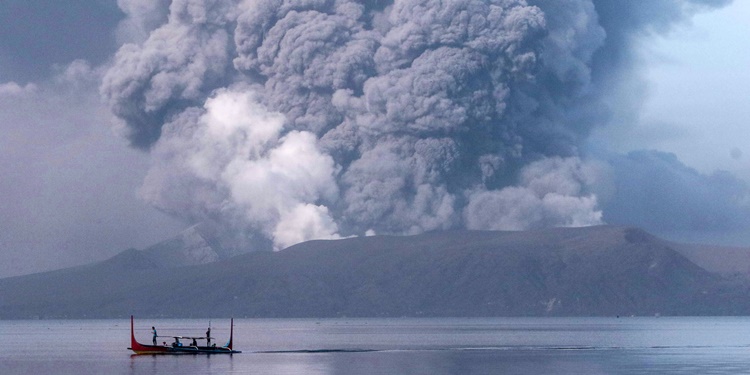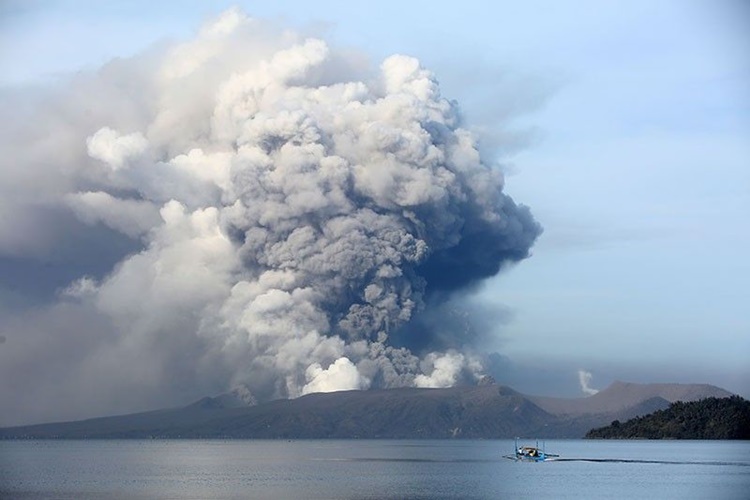Taal Volcano Emits Increased Amount of Sulfur Dioxide & Generates 233 Quakes Within 24 Hours, Phivolcs Says
The state volcanology agency Phivolcs reported that Taal Volcano emits an increased amount of sulfur dioxide and generates around 233 volcanic earthquakes in just a day.
On Tuesday (February 4, 2020), the Philippine Institute of Volcanology and Seismology reported that Taal Volcano continues to show signs of unrest and irregularities. The volcano remains under alert level 3
Phivolcs said that Taal Volcano’s sulfur dioxide emission increased again at an average of 231 tonnes per day. The amount of sulfur dioxide is double compared to the previous measurement of 97 tonnes per day.

The seismology agency said that the presence of the volcanic compound in the atmosphere signifies a magmatic activity moving upward to the surface. The emission of sulfur dioxide has already reached over 5,000 tons per day for the past three weeks.
You can also read: PHIVOLCS: Taal Generates 156 Volcanic Earthquakes That Could Lead to Eruptive Activity
Taal Volcano Network reported that around 233 volcanic earthquakes including eight low-frequency events have been detected in the past 24 hours. The low-frequency events are due to the cracks resonating as magma and gases moving towards the surface, according to the United States Geological Survey.
“They are often seen prior to volcanic eruptions, but their occurrence is also part of the normal background seismicity at some volcanoes and their occurrence does not necessarily indicate that an eruption is imminent,” USGS said.

The volcanology agency also warned the public of weak phreatomagmatic explosions, lethal volcanic gas expulsions, ashfall, and volcanic earthquakes.
What can you say about this? Just feel free to leave your comments and reactions to this article.
